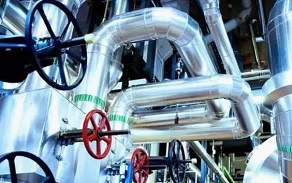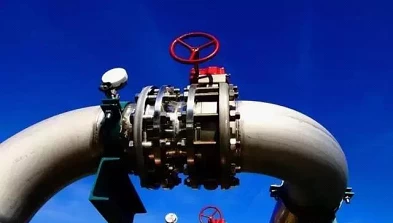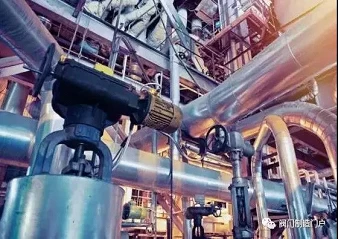The essence of pipeline valves in these aspects
What are its functions? how to install? What does the common logo mean? What should I do if something goes wrong? The most important 4 aspects, next, let's learn with you!

4 functions
1. Cut-off and open media
The flow channel is a straight-through valve with small flow resistance, and it is usually selected as a valve for closing and opening the medium.
Down-closed valves (stop valves, plunger valves) are less
commonly used because of their tortuous flow paths and higher flow resistance
than other valves. Where higher flow resistance is allowed, closed valves
can be used.
2.Control flow
Generally, a valve that is easy to adjust the flow rate is selected for controlling the flow rate. Down-closed valves, such as globe valves, are suitable for this purpose because their seat size is proportional to the travel of the closure.
Rotary valves (plug valves, butterfly valves, ball valves) and flexure valve (clamp valves, diaphragm valves) can also be used for throttling control, but usually only applicable to a limited range of valve diameters.
The gate valve uses a disc-shaped gate plate to make a
cross-cutting movement to the circular valve seat. It can control the flow
better only when it is close to the closed position, so it is usually not used
for flow control.
3. Commutation and shunting
This valve can have three or more channels depending on the need for reversing and diverting. Plug valves and ball valves are more suitable for this purpose, so most of the valves used for reversing and diverting use one of these valves.
However, in some cases, other types of
valves can also be used for reversing and diverting as long as two or more
valves are properly connected to each other.
4. Medium with suspended particles
When suspended particles are present in the medium, it is most suitable to use a valve with a wiper function whose sliding member slides along the sealing surface.
If the back-and-forth movement of the closing member to the valve seat is vertical, particles may be trapped. Therefore, this valve is only suitable for basically clean media unless the sealing surface material allows the particles to be embedded. The ball valve and the plug valve have a wiping effect on the sealing surface during the opening and closing process, so it is suitable to be used in the medium with suspended particles.
3 major installation issues
I. Check before installation

1. Carefully check whether the valve model and specifications meet the requirements of the drawing.
2. Check whether the valve stem and valve flap are opened flexibly, and whether they are jammed or skewed.
3. Check the valve for damage and whether the threads of the threaded valve are straight and complete.
4. Check whether the valve seat and valve body are firmly connected, the valve disc is connected to the valve seat, the valve cover and the valve body, the valve stem and the valve disc.
5. Check whether the valve gasket, packing and fasteners (bolts) are suitable for the requirements of the nature of the working medium.
6. Old or long-standing pressure reducing valves should be dismantled, and debris such as dust and sand should be washed away with water.
7. Remove the port cover and check the seal. The valve flap must be closed tightly.
2.General requirements for installation

1. The valve installation position should not hinder the operation, disassembly, repair and maintenance of equipment, pipelines and the valve body itself, while taking into account the beautiful appearance of the assembly.
2. For valves on horizontal pipelines, install the valve stem upwards or install it at an angle. Do not install it with the handwheel downwards. Valves, stems and handwheels on high-altitude pipelines can be installed horizontally, and the opening and closing of the valves can be remotely controlled by a chain at a low level.
3. The arrangement is symmetrical, neat and beautiful; the valve on the riser is the most suitable to operate with the chest height of the valve if the process permits. Generally, it is suitable to be 1.0-1.2m from the ground, and the valve rod must be along the operator. Orientation.
4. The valve on side-by-side risers should have the same centerline elevation, and the clear distance between the hand wheels should not be less than 100mm; the valves on side-by-side horizontal pipes should be staggered to reduce the distance between pipes.
5. When installing heavy valves on pumps, heat exchangers and other equipment, a valve bracket should be provided; when the operation is frequent and the valve is more than 1.8m away from the operating surface, a fixed operating platform should be provided.
6. If there is an arrow mark on the valve body, the direction of the arrow is the flow direction of the medium. When installing the valve, pay attention that the arrow points in the same direction as the medium flow in the pipe.
7. When installing flange valves, ensure that the two flange end faces are parallel and concentric with each other. Do not use double gaskets.
8. When installing a threaded valve, in order to facilitate removal, a threaded valve should be equipped with a live joint. The installation of live joints should consider the convenience of maintenance. Usually, the water flows through the valve first and then through the live joints.
3. Installation precautions

1. The valve body material is mostly made of cast iron, which is brittle, so it must not be hit by heavy objects.
2. When carrying the valve, it is not allowed to throw it by hand; when lifting or lifting the valve, the rope should be tied to the valve body, and it is strictly forbidden to be tied to the hand wheel, valve stem and flange bolt hole.
3. The valve should be installed in the most convenient place for operation, maintenance and repair, and it is strictly prohibited to bury it underground. Valves on pipelines buried directly and in trenches shall be provided with inspection wells to facilitate valve opening and closing and adjustment.
4. The thread should be intact and tangled, lead-oiled or teflon raw material tape should be wrapped around the thread. When turning, the hexagonal valve body screwed into one end of the pipe should be clamped with a wrench.
5. When installing the flange valve, pay attention to tightening the connecting bolts diagonally, and use even force when turning to prevent the gasket from drifting or causing deformation and damage to the valve body.
6. The valve should be kept closed during installation. For the threaded valve closer to the wall, the valve stem and hand wheel need to be removed during installation in order to rotate. When disassembling, turn the hand wheel to keep the valve open, and then disassemble.
Cowinns is a reliable industrial valve supplier, we manufactured 600LB double block and bleed valve for clients
 +86 512 68781993
+86 512 68781993 


















